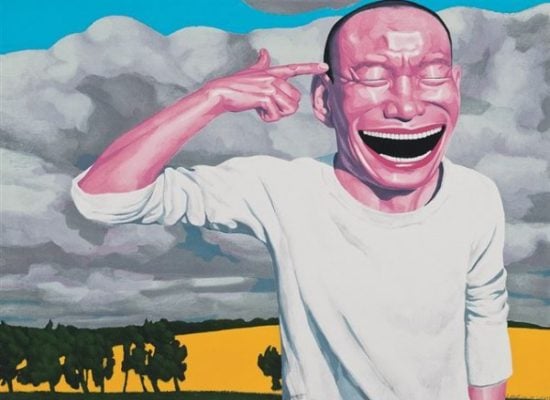Chinese modern and contemporary art still represents just a fraction of the massive $8.5 billion* global market for Chinese art and antiques. Nonetheless, it is a fast-growing and fast-paced sector, particularly at auction, where prices tend to escalate rapidly once an artist is “discovered.”
Take Zhang Xiaogang, perhaps the most extreme example of this, who, with a total of nearly $104 million in auction sales, takes the #5 slot of the top-selling Chinese artists at auction (see Zhang Xiaogang Artist Index and the Bloodlines Series.)
Our ranking is based on overall auction sales volume for the past three and a half years—specifically from January 2011 through this past July—according to data from artnet Analytics and the artnet Price Database.
In early 2006, Zhang Xiaogang’s family portraits first started drawing attention in the US, where his Chelsea dealer Max Protetch was offering the works at prices under $100,000. In March of that year, when Sotheby’s established a dedicated department and held a special sale for Chinese contemporary art, the artist set a new auction record. His 1998 oil on canvas Bloodline Series: Comrade No. 120. soared past its presale estimate of $250,000–350,000, all the way to $979,200. Since then, seven of his works have sold for over $5 million each, with his Bloodline: Big Family No. 3 (1995) setting the current record of $12 million at Sotheby’s Hong Kong this past April. That particular picture ranks at #7 of the most expensive individual works by Chinese artists. The trajectory has been similar for other contemporary artists. Momentum that can quickly spark a bidding frenzy, however, is not without serious risk to the downside.
Zeng Fanzhi, who, with a total volume at auction of $226 million, ranks at #3 of the top 30, turned heads at this past fall’s sales in Hong Kong when his The Last Supper (2001) soared to $23.3 million at Sotheby’s. A month later, on November 23, Christie’s Hong Kong sold Hospital Triptych (No. 3) (1992) for $14.6 million. Tellingly, the artist’s third highest price had been set six years earlier, in May 2008, at the then-peak of the art market, when Mask Series No. 6 (diptych) (1996), sold for $9.7 million, far above its estimate of $2–3 million.
Topping the list for the most expensive individual work, as well as for overall auction sale volume, is Wu Guanzhong, with a total of $510 million. At a November 2011 sale at Beijing A&F Auction Co. Ltd., his 1973 oil on paper landscape sold for $23.5 million, just eclipsing Zeng’s The Last Supper. Wu’s work also accounted for two more of the 10 highest lots.
Chinese-French painter Zao Wou-Ki ranks at #2 on our list, with $417.6 million in sales and a record of $14.7 million set at Sotheby’s Beijing this past December for an oil on canvas titled Abstraction (1958).
A look at the 10 highest-selling lots indicates that the global giants are grabbing market share, this after years of almost impenetrable competition from local houses in Asia, particularly in mainland China. Sotheby’s Hong Kong sold four of the 10 most expensive lots, while Sotheby’ Beijing sold the $14.7 million Zao Wou-Ki lot. Christie’s Hong Kong sold the $14.6 million Zeng Fanzhi. The rest of the top lots were sold by Beijing A&F Auction (one lot); Poly International Co. (two lots); and Ravenel, in Taipei (one lot).
* Based on the Global Chinese Art Auction Market Report 2013, by artnet and the China Association of Auctioneers (CAA).
[All images are courtesy of artnet.]
